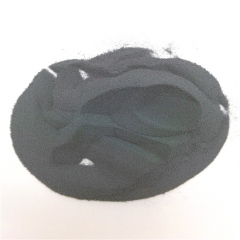Professional industry ceramic supplier, silicon nitride, silicon carbide, aluminum nitride and any other kinds of ceramics.
The dangers of calcium silicide
Health hazards: Irritating and corrosive to eyes, skin and mucous membranes.
Fire and explosion hazard: This product is flammable when wet, corrosive and irritating, and can cause burns to the human body.

The physical and chemical properties of calcium silicide
Appearance and properties: white powder or vitreous solid.
Relative density (water=1): 2.5
Ignition temperature (℃): 540 (dust cloud)
Lower explosion limit%(V/V): 60(g/m3)
Solubility: insoluble in water, soluble in acid and alkali.
Stability and reactivity: Incompatible materials: acids, water, fluorine. Conditions to avoid: Contact with humid air.
Overview of calcium silicide CaSi2 powder
Calcium silicide CaSi2 is an off-white or dark gray to black solid substance with a melting point of 1033°C. It is insoluble in water and decomposes in water to produce hydrogen and calcium hydroxide. Decomposes in hot water. Calcium silicide is flammable and can ignite spontaneously in the air. In an inert atmosphere, at 850°C, Ca metal reacts with Si to form calcium silicide. It is a white or dark gray to black solid with a melting point between 700 and 935°C.
Application of calcium silicide CaSi2 powder
Various uses of calcium silicide. Some of them include
Calcium silicide is used to make special metal alloys, for example for phosphorus removal and as a deoxidizer.
In the pyrotechnic industry, it is used as a fuel to make special mixtures, such as smoke, flashing components, and impact caps.
Calcium silicide is used to make certain initiators, pyrotechnics and smoke components.
Silicon-calcium alloys are mainly used as desulfurizers and deoxidizers in the iron and steel industry and foundry industry.
It has been found that calcium silicide is extremely corrosive to all metals including refractory metals.
Calcium intermetallic silicide (CaSi2) is formed by reducing calcium oxide and dissolved carbon dioxide and silica particles in the electrolyte at the same time.
Silicon-based fuels are used in certain delayed mixtures, such as control explosive bolts, grenades, and infrared decoys. The flue gas composition usually contains hexachloroethane. During the combustion process, they will produce silicon tetrachloride, just like the titanium tetrachloride used in smoke filters, it reacts with moisture in the air to form a dense white mist. Some mixtures use gum arabic to inhibit the decomposition of calcium silicide.
The self-heating canned military rations invented during World War II use a 1:1 mixture of iron oxide and calcium silicide similar to bauxite. After the mixture is ignited, an appropriate amount of heat will be generated, and no gas will be generated.
Price of calcium silicide CaSi2 powder
The price of calcium silicide CaSi2 powder will vary randomly with factors such as the production cost, transportation cost, international situation, exchange rate, market supply and demand of calcium silicide CaSi2 powder. Tanki New Materials Co., Ltd. aims to help various industries and chemical wholesalers find high-quality, low-cost nanomaterials and chemicals by providing a full set of customized services. If you are looking for calcium silicide CaSi2 powder, please feel free to send an inquiry to get the latest price of calcium silicide CaSi2 powder.
Suppliers of calcium silicide CaSi2 powder
As a global cobalt silicide CoSi2 powder supplier, Tanki New Materials Co., Ltd. has extensive experience in the performance, application and cost-effective manufacturing of advanced engineering materials. The company has successfully developed a series of powder materials (molybdenum disilicide, titanium silicide, calcium silicide, iron boride), high-purity targets, functional ceramics and structural devices, and provides OEM services.
| Technical Parameter of Calcium Silicide CaSi2 Powder: | ||||||
| Product Name | MF | Purity | Particle Size | Melting Point | Density | Color |
| calcium silicide | CaSi2 | 99% | 5-10um | 1020℃ | 2.5 g/cm3 | silver black |
| Chemical Composition of Calcium Silicide CaSi2 Powder: | ||||||
| CaSi2 | Ca | Si | C | P | Fe | S |
| >99% | 57.12% | 41.50% | 0.20% | 0.02% | 0.29% | 0.02% |
